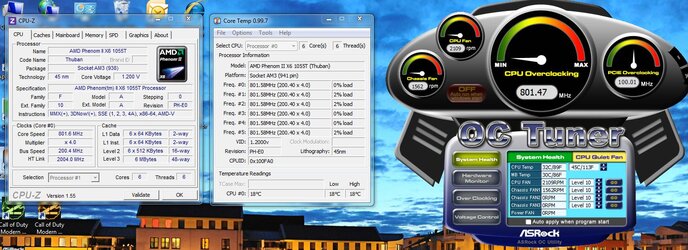Can someone tell me what program I should be using to check the Temps and other vital stats for this MB under Windows 7 64-bit? I checked the website but didn't find anything. I don't have the CD either. I've been used to ASUS MB monitor and assumed most companies had something like this too? I guess I could use a third party app, but one developed by ASRock would be preferable.
Thanks
AMD 1055T X6
ASRock 870 Extreme3
G.Skill 4GB DDR3 1600 Rip Jaws
WD Black SATA
WD Green SATA
ATI Gigabyte HD5770
OCZ Fatality 550W
Thanks
AMD 1055T X6
ASRock 870 Extreme3
G.Skill 4GB DDR3 1600 Rip Jaws
WD Black SATA
WD Green SATA
ATI Gigabyte HD5770
OCZ Fatality 550W

 Having said that, when I get a new system I like to check two or three programs at first just to make sure they're all reporting (near) the same. Some apps and boards don't mix well and without a check you can miss compatibility errors ...
Having said that, when I get a new system I like to check two or three programs at first just to make sure they're all reporting (near) the same. Some apps and boards don't mix well and without a check you can miss compatibility errors ...

